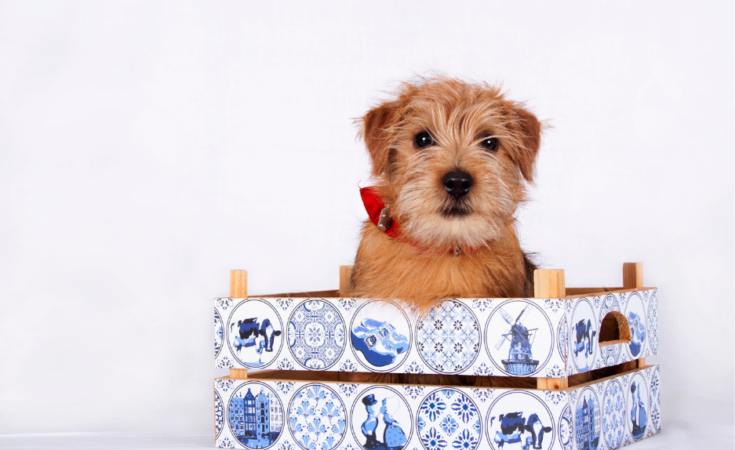Dog crates are special portable dog houses, large enough for your pup to stand, lay and turn around in. These crates are extremely useful not only in transporting your dog, but in training them when they are puppies, too. A crate will give your dog the space they need and can become a comfort to your canine when used properly.
While a crate is a great thing to have in your home if you’ve got a pup, they don’t always help with issues such as your dog barking or making unnecessary noise. What’s more, as homely as they may be for your dog, they can’t protect them from loud noises such as fireworks on the 4th July, leaving you with a frightened pooch.
Fortunately, there’s a way to get around this. You can easily soundproof your dog crate at home to prevent noises escaping the crate, such as barking, and noises getting into the crate and disturbing your furry friend.
But why would you need a soundproof dog crate? And how would you go about making one? We’ve got all the answers for you below, so continue reading.
Types Of Dog Crates
There are a few different types of dog crates. Let’s take a look at them below.
Plastic Crate
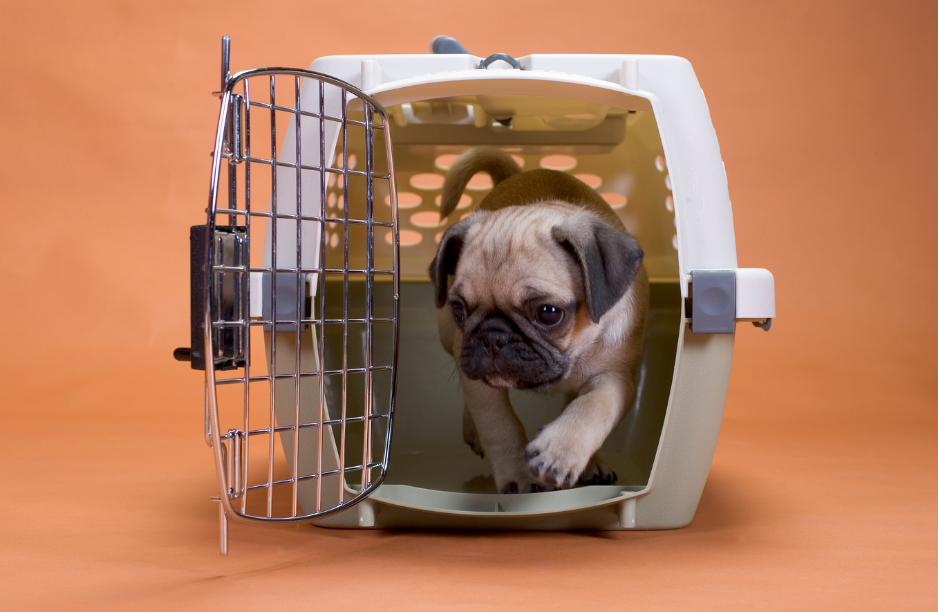
A plastic crate is one of the most heavy duty pet crates, and is built to withstand boisterous dogs. A plastic crate has solid walls that gives a dog more privacy and helps to calm them. These crates are also authorized for transporting dogs on planes.
Soft Crate
A soft crate is made out of fabric and, although sturdy, gives a dog a softer place to lay. These crates are great for dogs that like to sleep in crates.
Metal Crate
Metal crates are also very durable, like plastic crates. Made of thick metal wires, they can withstand most things. Another bonus to these crates is that they are easy to transport because they are foldable, which also makes them easy to store.
Wooden Crate
A wooden crate is for those that want their dog crate to fit in with the rest of their home decor. Not always the most convenient, these crates can’t be transported, but they do look great. They’re also very durable and long-lasting.
What Is A Soundproof Dog Crate?
A soundproof dog crate is a regular pet crate that has been modified to:
a) absorb the sound of your dog barking from inside, and
b) muffle noises from the outside so your dog is not disturbed.
A soundproof crate does this by using soundproofing materials to help absorb any sound and stop reverberations and echoes. One of these crates won’t silence noises completely, but will be great at reducing any sound produced. This will allow both you and your dog to live much happier!
Most crates can be transformed into a soundproof crate with not too much hassle. Keep reading on to find out more.
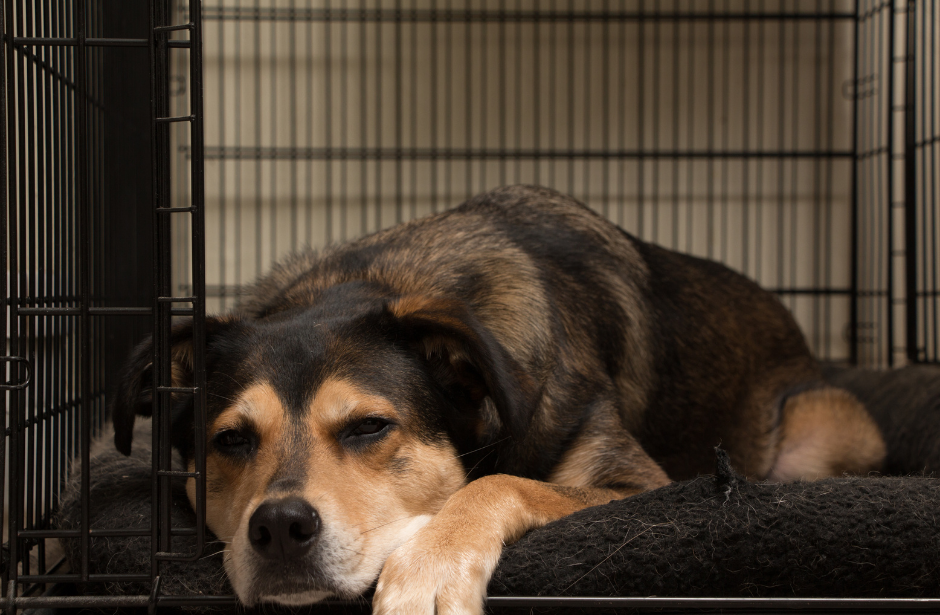
Why Do I Need A Soundproof Dog Crate?
You may be wondering why you need a soundproof dog crate. Why can’t you leave your dog crate as it is?
Even when you’ve trained your dog and give them all the attention and love they need, sometimes they just love to bark! It’s what dog’s do. Many dog owners choose to soundproof their dog crates to keep this barking from disturbing them. Not only that, but it can also help contain any noise your dog produces to your own home, so you aren’t affecting any neighbors or their dogs.
Even if you do not have an issue with your dog barking, your dog might have problems with loud sounds. Have you ever noticed your dog tremble or whine when there’s a thunderstorm outside? Are they uncomfortable when travelling and don’t like excess noise? You might even find your pup is disturbed by the echo of their own bark.
All of these issues can be fixed by soundproofing your pet crate. Special materials can help to dampen any noise and absorb any echoes so your pup is at peace again.
When And When Shouldn’t I Use A Dog Crate?
A crate is something that is used by many dog owners, particularly when their canines are young and in their “destructive phase”. If you’re having to go out and leave them alone, a crate is a great place to put a dog so they don’t destroy furniture or your belongings when you can’t supervise them. Crates can also be useful when you have small children around and your pup isn’t used to them, particularly if your dog is prone to getting overexcited with new people.
Other situations where you might choose to use a crate is if you are house training them — a crate is a great way to prevent accidents from happening when you can’t watch them. Crates can also be used for a time out, especially if your pup is a little too energetic and needs some time to calm down.
However, a crate isn’t just useful for when your dog isn’t fully trained. A soundproof crate can be an excellent place to calm your dog, especially if they are sensitive to loud noises. For example, on national holidays when there are firework displays, you may choose to put your dog inside a soundproof crate to protect them from the noise and to prevent them from becoming distressed. Soundproof crates can also be used when you are travelling, and will help to dampen any loud noises that might be heard if travelling in the car or on a plane.
That being said, there are also times when using a dog cage isn’t a good idea. You should never confine your dog to a crate if they are scared of it, as this is both cruel and inhumane. Your dog will never develop a good relationship with you or the crate if you are constantly forcing them into it against their will. Ideally, your dog should see their crate as their own space where they can feel calm and relaxed.
If your pup has separation anxiety, you should not put them in a crate. Putting your pup in a crate when they suffer from anxiety will only makes things worse, and can lead to your dog harming themselves to try to get out of the crate. If your dog has separation anxiety, you should speak to a professional to help solve the problem.
There are many other situations in which you shouldn’t use a dog crate, including as a form of punishment, in uncomfortably high temperatures, for lengths of time over 5 hours, and when any medical condition your canine might have could be worsened by crate time.
How To Soundproof A Dog Crate
Crate Cover
Soundproof dog crate covers are a simple and inexpensive way to reduce noise in your dog crate. All you need to do is make sure the cover is the right size, and place it over the crate to help with noise dampening.
The covers are made from sound absorbing materials, often polyester, and not only helps with noise, but will also give your pup some privacy. These covers are also not heavy enough to cause overheating, great if you live in a hot climate.
A crate cover is easy to remove and easy to wash, too. Readily available online, check the material is breathable, washable and comfortable for your dog before buying.
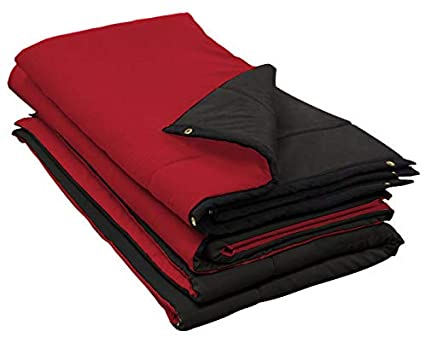
Acoustic Materials
Acoustic materials can be another great way to soundproof a dog crate. Products such as absorption sheets, acoustic foam panels and acoustic tiles can be placed over the outside of the dog crate and reduce the amount of noise that is heard both inside and outside of the crate.
Absorption sheets are a common favorite among dog owners, because they are not only easy to fit, but they also create a dark room for the dog while soundproofing. These sheets come with grommet holes installed for easy mounting and are very inexpensive.
If you place soft acoustic materials on the top half on your crate, you may wish to soundproof the bottom half of your dog’s crate with a more durable material such as MLV.
Moving Blankets
Moving blankets are very heavy, which makes them a great choice for soundproofing your dog crate as they will absorb a lot of noise. However, because they are so thick, you should place them at the bottom of your crate and not cover the entire top of the crate. This is because your dog needs to breath fresh air! Soundproof blankets are fairly cheap to buy and are machine washable, which makes them very convenient.
Soft Crate
A soft crate is made out of softer materials to begin with, so swapping out your wire or plastic crate for one of these can be a great way to ensure your crate is soundproof. Not only can these crates be more comfortable for your dog, but they often come with foam and padding built in. And, not to mention, the soft fabric will absorb noises a lot better than hard surfaces such as plastic, which will reverberate sounds.
Soft crates are often collapsible, so you can put it away when you are not using it. This also makes a soft crate a great choice if you like travel with your pup. What’s more, they’re washable, too.
How To Soundproof A Dog Kennel
If you do not have a dog crate, or would prefer to make changes to your dog’s kennel instead of buying a crate, there are a few ways you can soundproof a dog kennel.
Soundproofing a dog kennel is similar to soundproofing a crate, and you can use many of the same techniques. However, the main issues with a dog kennel are echoes and vibrations. Because a kennel is made of hard material, sound will reflect off of it. Therefore, we need to find a way to limit these echoes and make the kennel quiet.
Acoustic Tiles
Acoustic tiles are very strong and do not allow sound to pass through them. They come with their own adhesive, and you can stick them to the kennel walls, floors, and ceiling. You can also place them on the walls and ceiling of the room in which your dog kennel is for further sound absorption. These are best placed on the outside so your dog doesn’t chew them.
Acoustic Panels
Acoustic panels are usually used to soundproof recording studios, but can be a great way to soundproof your kennel, too. One of the best things about acoustic panels is that you can customize the way they look, printing your own design onto them and making a pattern on the wall where you will stick them. Again, these are best placed on the outer wall of the kennel.
Acoustic panels are excellent at absorbing mid to high frequencies and have an NRC rating of 1.0.
Sound Baffles
Sound baffles are a sound reducing material that are suspended from the ceiling, and are great at reducing echoes in a room. You can hang them from the roof your dog’s kennel.
Aside from being sound absorbing, they are also class A fire rated, lightweight, easy to install, and can even be decorative, too!
Things To Avoid When Soundproofing A Dog Crate
There are a few things you should watch out for when soundproofing your dog crate. These are potential issues to keep on top of to ensure your dog is happy and safe.
High Temperature
Special sound absorption crate blankets or covers have been designed to prevent the crate from becoming too hot, so using regular blankets you have around the house may cause overheating. If you are using your own blankets or towels, make sure you don’t completely cover the crate, and don’t leave the crate in direct sunlight. Without enough air and ventilation, your dog could become very uncomfortable or even sick.
Blackout
If your crate is dark, it may be relaxing for your dog. It will give them a space to themselves and also allow them to calm down when they are excited. However, the crate should never be completely blacked out. This can cause confusion and stress in your dog, so be mindful of this when using soundproofing materials.
Poor Ventilation
Your dog needs fresh air, so always check there is enough ventilation in your dog’s crate! Materials used in a crate cover or sound absorption blanket are generally breathable, but make sure you always double check your pup has enough air.
Alternative Solutions
If you’ve tried soundproofing your dog crate and find your pup is still being disturbed by high noise levels, or your dog won’t go in their crate and you need some other ways to protect their ears from loud sounds, there are a few alternative solutions we suggest you try.
Noise-Cancelling Ear Muffs For Dogs
There are manufacturers out there that have designed special ear muffs for dogs that help to cancel out any noise. While these do not completely block out the noise, they will certainly help if your dog is scared of loud noises. Noise-cancelling ear muffs can also be a great way to prevent hearing damage in your pup.
White Noise
White noise is a great way to not only mask sounds and noises your dog might be uncomfortable with, but can also distract your canine. For example, leaving the radio on or music playing while you go out can be soothing for your dog, because it not only gives them something to listen to and distracts them, but also disguises sounds from outside that may be potentially upsetting for your pup. There are also white noise apps out there that you can download on your smartphone.
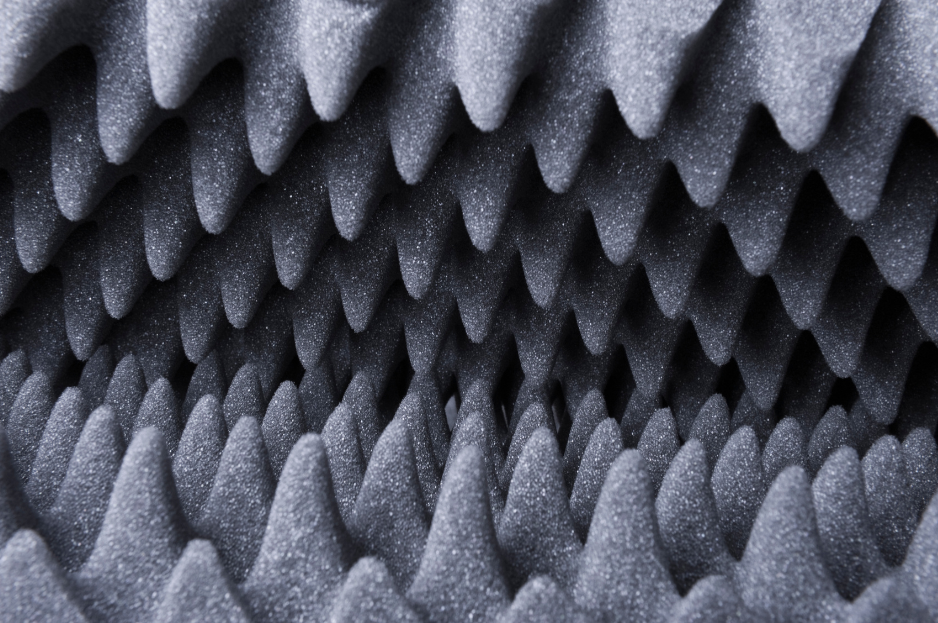
Further Soundproofing Of Your Home
If your dog isn’t a fan of the crate or you want to further dampen any sounds they might hear, you can soundproof your home. There are many ways to do this, including using foam, sealing cracks in the walls, soundproofing doors and even rearranging furniture and adding thick curtains to further absorb any noise from outside. Not only will these tips help to calm your dog, but can also prevent your neighbors from hearing your dog bark.
Soundproof Dog Crate FAQs
Why is my dog always barking?
You may want to soundproof your dog crate because you dog is always barking, but working out why your dog is barking is a good idea, too.
Dogs usually bark because they are scared of something or need reassuring, so making sure they feel safe is very important. Their crate should be their space where they do feel safe, so never put them inside their crate as a punishment.
Your pup could also be barking because they have a lot of built up energy. You should always ensure you exercise your dog properly every day, and wearing them out will mean they are more likely to sleep at home instead of bark! Take them to the park for a run or on a long hike, and they’ll be happier and hopefully a lot less noisy.
One other instance in which your dog’s barking could cause disturbance is when you leave the house. If you spend a long time saying goodbye to your dog each time you leave, it can become quite upsetting for your pup. Instead, leave quickly without much fuss and avoid the emotional farewell. You could give them a stroke and a treat as you leave, so the treat distracts them until you have left. This will help them to get used to you leaving the house and reduce constant barking noise.
You could install a dog camera, too, which allows you to see and speak to your dog when you are not at home. Some even allow you to dispense treats to your dog throughout the day, which can help to keep them calm and occupied.
If you fear your dog may be barking for another reason, it might be a good idea to take them to the vet to get them checked out. In rare cares your dog could be barking because they are in pain. You could also take them to a dog trainer and they can work with you to help reduce how much your dog barks.
How can I get my dog to settle in their crate?
Your dog should feel as if their crate is their safe space, so getting them to settle is important. To do this, you will have to train them. You should do this so they learn to be inside their crate without barking or whining, and they will soon learn that being inside the crate is not bad and will actually enjoy it! You can use treats to reward them for being in their crate, and the trick is to keep persevering, even if your pup doesn’t like it at first.
Another way to get your canine to settle in their crate is to position the crate in a familiar space for them. Placing it in a family room will make them much more willing to go in the crate, instead of the basement or another room they do not know. You could also buy them some toys to play with in the crate, so they enjoy being in there.
Summary
If your pup barks a lot and you’re worried about the neighbors complaining, or your furry friend spends 4th July trembling thanks to fireworks, it might be a good idea to soundproof their dog crate to prevent noises from both getting in and escaping. Soundproofing a crate is simple and inexpensive, and can be done with crate covers, moving blankets and other acoustic materials.
Don’t forget to double check your pup’s crate isn’t too hot and has enough air circulation, and always ensure your dog isn’t scared of their crate. Training and reassurance can help them to become familiar with their crate, and soon enough they’ll love spending time in it. Which soundproofing materials are you going to use?

